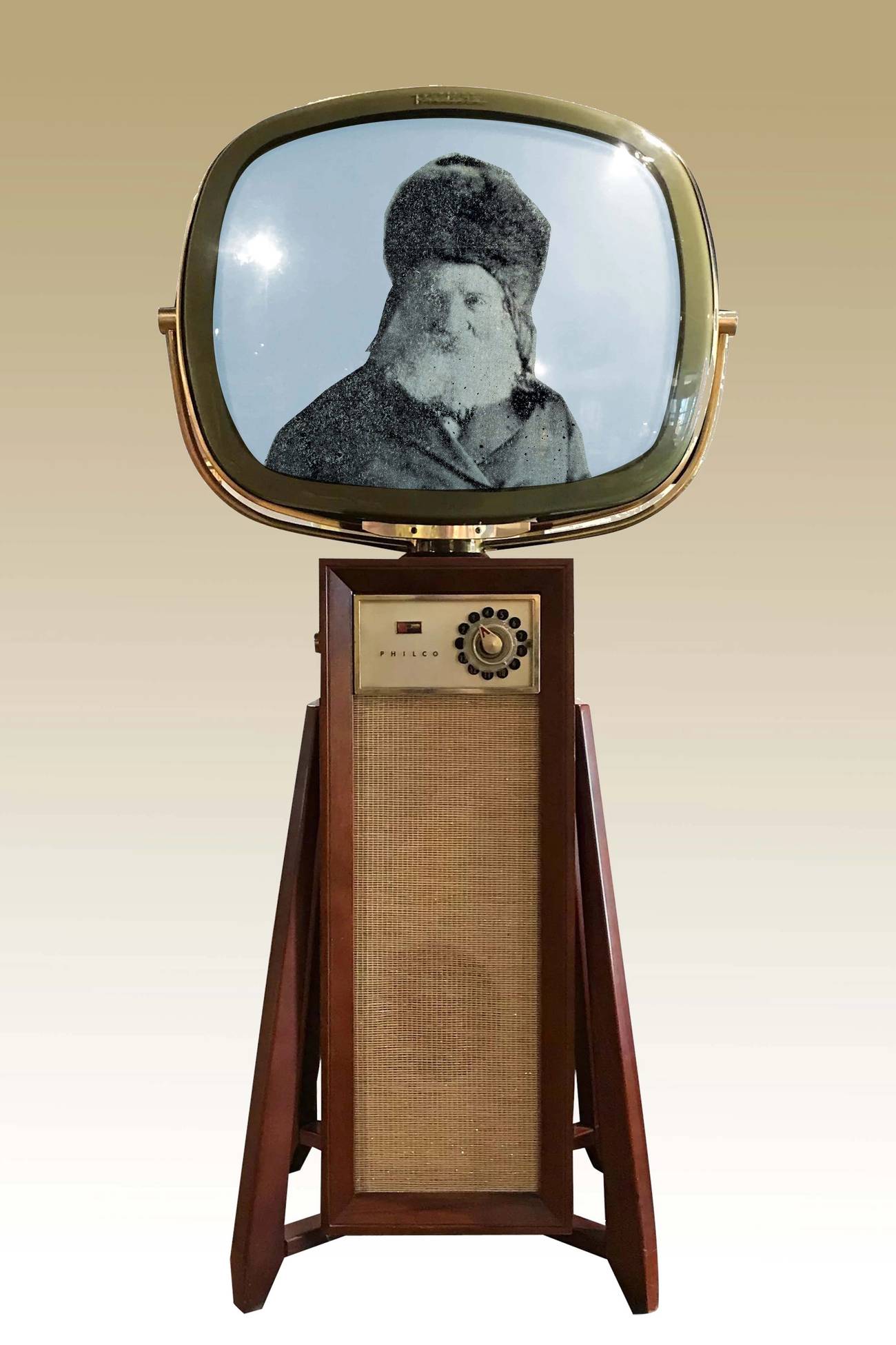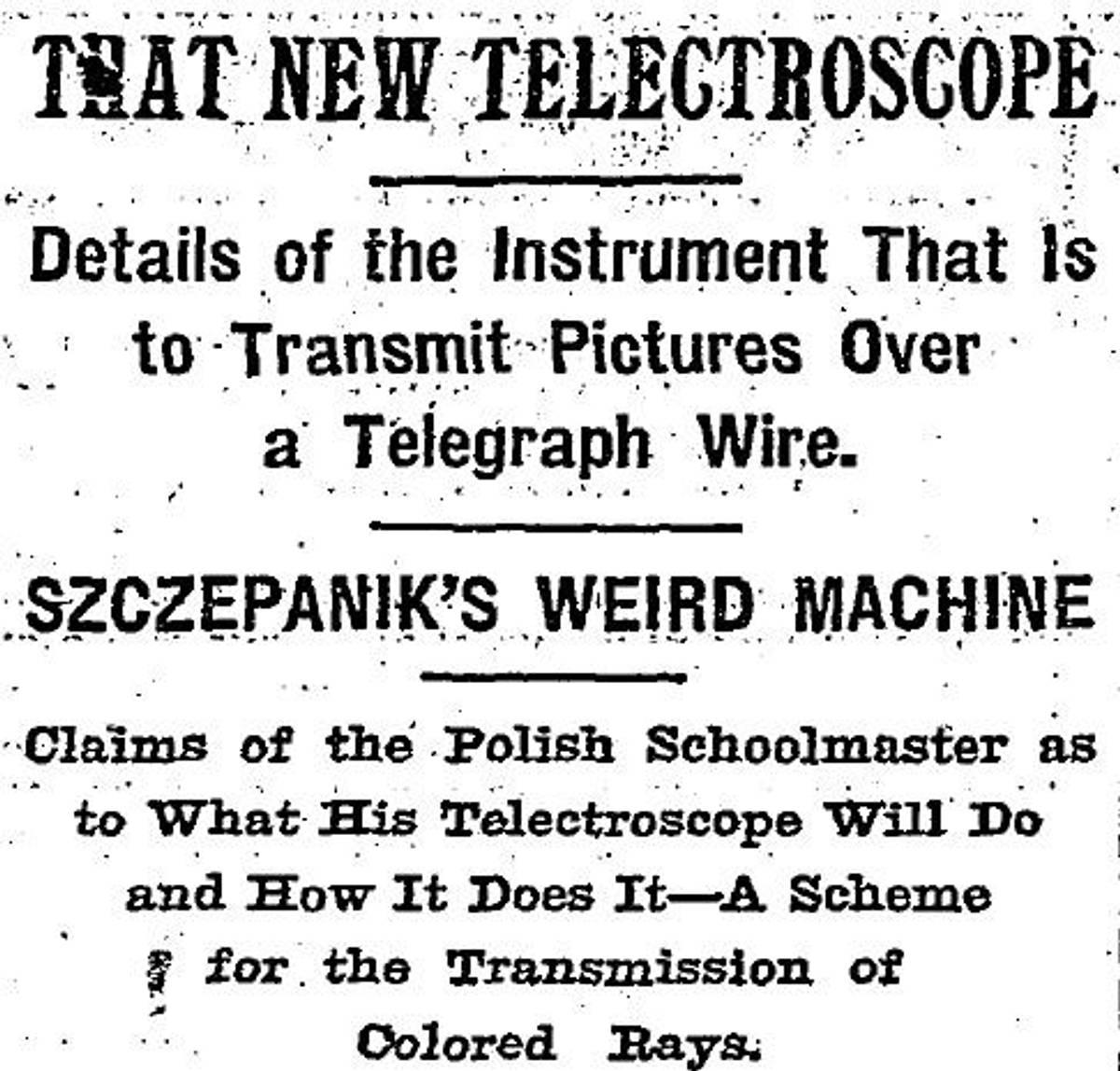The History of the Zoom Dilemma
Forward-thinking rabbis have been anticipating today’s halachic questions about how technology can be used for more than a century




The Jewish world has been abuzz over the wisdom and propriety of using videoconferencing for various rituals in the wake of the coronavirus: May one utilize Google Chat to include their loved ones in the Passover Seder or a Friday night meal? Do 10 Jews praying together over Zoom create a minyan? Can a mourner recite Kaddish over Skype? From the hype, one might think that these are entirely new dilemmas of the 21st century. In fact, the first significant halachic discussion about religious life and videoconferencing took place almost 120 years ago at the turn of the 20th century. The prescient discussion displays great farsightedness as well as insights into the dilemmas of allowing such technology into our religious life.
One wouldn’t expect halachic discussion regarding videotelephony in 1901. Electronic television didn’t develop until 1927 and the major means of communication at the turn of the century was still telegraphy and letter writing. Yet following the invention of the telephone in 1876, the imagination of many ran wild as they pondered what the future might bring.
One rabbi who was thinking ahead of his time was Rabbi Yitzchak Schmelkes (1828-1905) of Galicia, one of the most prominent Jewish legal decisors of the late 19th century. In the 1860s, Schmelkes addressed an interesting question regarding telegraphy. Within Jewish family law, a husband must explicitly instruct a scribe (sofer) to write a divorce writ (gett) and designate witnesses to this formal legal action. If he is far away, can a man make this legal declaration through a telegram? This could help expedite the divorce process and prevent cases of women stuck in a dead marriage (agunot) to a husband in a distant land. This suggestion, however, raised legal problems because technically speaking, someone else (the telegraph operator) would be transmitting the code. Moreover, unlike with a handwritten order, it was challenging to verify if it was the husband who sent the message or to obtain the proper attestation from witnesses to confirm this was the will of the husband. Schmelkes remained skeptical about utilizing this technology.
At some later point, however, Schmelkes added an addendum to the responsum. (It couldn’t have been addressed to the original recipient of the letter, Rabbi Tzvi Horwitz of Brody, who had passed away in 1873.) The telephone had been invented in 1876, raising new opportunities, since one can more easily identify the speaker’s voice heard directly over the phone. Schmelkes was unsure if this new technology was much better and asserted it would work for some types of agency but not others.
When this responsum was published in his 1901 volume, Schmelkes added yet another addendum, this time in the table of contents. “Should it come to be that there will be a telephone or teletascope machine in which one can also see the speaker’s image through a photograph, then it will be easier to permit agency through this machine.” Prophetic, you say? Indeed, some recent rabbinic writers have deemed Schmelkes as a great visionary, almost oracular, for imagining the invention of the videophone.
Schmelkes, in fact, wasn’t prophetic but was in tune with the animated discussions about the future of technology. The give away is his use of the term teletascope (טעלעטאסקאפ, which seems to be a Yiddish version of the word “telectroscope” or “telephonoscope”) that was regularly used then by both scientists and science-fiction writers in America and Europe to depict how the telephone could evolve. This April 3, 1898, headline from The New York Times, for example, depicted the novel ideas of the Polish inventor Jan Szczepanik.

That year, Mark Twain would write about Szczepanik in his fictional short story, “From the ‘London Times,’ 1904.” He depicted the telectroscope as connecting with “the telephonic systems of the whole world. The improved ‘limitless-distance’ telephone was presently introduced and the daily doings of the globe made visible to everybody, and audibly discussable too, by witnesses separated by any number of leagues.” These predictions would come true, of course, but not by 1904. In any case, Schmelkes was apparently aware of these discussions and therefore added that should this concoction come to fruition, Jewish law could integrate its use for certain legal purposes.
This wasn’t the first time Schmelkes added an addendum to a responsum to discuss the telephone. In a previous volume, published in 1895, he added, once again in the table of contents, a paragraph to explain why it was prohibited to use a telephone on Shabbat, thereby becoming one of the earliest scholars to address the status of electricity in Jewish law. The telephone was his era’s groundbreaking invention and Schmelkes was committed to addressing how it fit into ritual life.
It would take, however, another 50 years for the profound social implications of the videophone to get addressed in rabbinic literature. It was the first week of August 1956. The Democrats were nominating Adlai Stevenson to challenge Dwight Eisenhower for the White House while the Dodgers were still competing in Brooklyn to defend their World Series title. By then, nearly half of American homes had one television but the phones were rented from AT&T, which retained a regulated monopoly on that market. IBM had just developed the first computer hard disk holding 5 megabytes of data. It was the size of two refrigerators and weighed over a ton, costing $10,000 per megabyte.
Meanwhile, in his study hall in Manchester, England, Rabbi Yitzchak Weiss (1902-1989), a prominent Hungarian rabbinic scholar who had successfully fled both the Nazis and the Communists, was reviewing a treatise sent to him regarding the laws of visiting the sick (bikur holim). This prosaic topic would seemingly not provide the fodder for a pioneering debate regarding a technological revolution. Yet the spread of the telephone had raised a new dilemma: Can one fulfill this mitzvah over the phone without actually visiting the sick? Some decisors said yes, deeming a phone call sufficient to strengthen the spirits of the patient while becoming inspired to pray for their well-being. Other scholars demurred, asserting that the primary purpose of a visit is to check on their condition and do something to help their care. For this goal, one’s physical presence is necessary. A third school of thought, joined by Weiss, contended that if the well-wisher was unable to visit, then a phone call is a legitimate, second-rate substitute since one could still inquire about their well-being and make follow-up calls to intervene with health care professionals.
In this context, Weiss cited the addendum of Schmelkes and raised the theoretical possibility that the television will evolve to work as a telephone and facilitate two-way communication. As he wrote: “What if the television will develop for individual use like the telephone today, and there will be the ability to see the sick person and speak with him, as one speaks with their neighbor?”
On the phone, he argued, one is groping in the dark since one can’t truly understand the condition of the sick person. Over video, however, perhaps the situation is different.
Weiss didn’t provide a conclusive answer and instead suggested a compromise proposal. The initial visit must be done in person, while all follow-up “visits” may be done over the phone. Through this combined effort, one gains intimate knowledge garnered from an in-person conversation while benefiting from the convenience of long-distance communication to follow up. Yet in contrast to the case of Schmelkes, Weiss’ theoretical discussion materialized a couple of weeks later. On Aug. 23, 1956, AT&T presented a primitive videophone system at a meeting of the Institute of Radio Engineers, previewing what would become the “picturephone” that was featured at the 1964 World Fair in New York.
While brief and inchoate, the deliberations of Schmelkes and Weiss remain enlightening because they raise the immediate societal dilemmas presented by videotelephony. We can see people through a webcam but still miss their presence. Perhaps visual contact is sufficient for legal declarations before a court, or even to facilitate kashrut supervision by a rabbi in Brooklyn for a production plant in Thailand or a farm in Idaho. Yet it is not ideal when it comes to comforting the bereaved, and entirely inadequate for creating a community of worshippers that brings God’s presence into a sanctified place. Videotelephony provides a lot of convenient services and ad hoc solutions for many problems. Yet if there is one good thing that the coronavirus experience may have taught us, it’s that a “virtual community” is no replacement for a real community. As Schmelkes and Weiss noted long before Zoom and Skype became household names, seeing each other is not the same as being with one another.
Rabbi Dr. Shlomo M. Brody is the executive director of Ematai and the author of Ethics of Our Fighters: A Jewish View on War and Morality (Maggid Books).